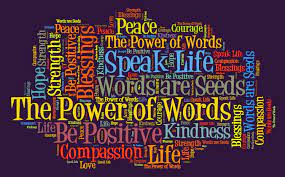MUSIC AND FILM
STUDENTS PUTTING THEMSELVES IN IMMIGRANT SHOES
ART
Tatyana Fazlalizadeh
Born in Oklahoma City in 1985.
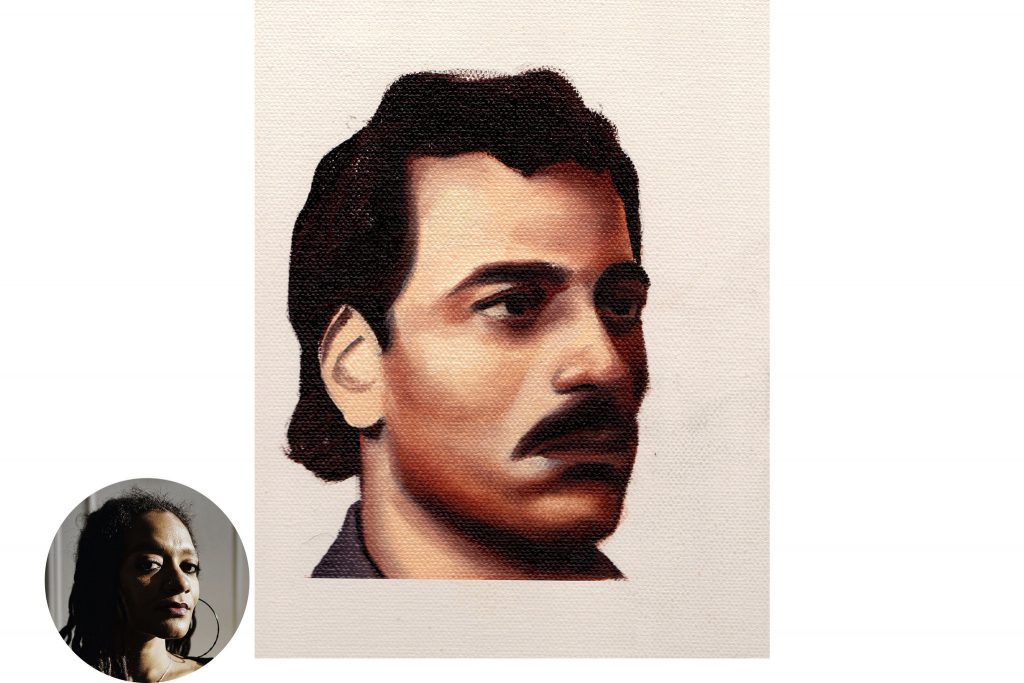
How we treat each other is based not only on our interpersonal interactions, but on how social and political structures inform our opinions ofpeople and subsequently how we treat or mistreat them. I’m curious about how the hateful rhetoric and policies of our current administration influence our impressions of immigrants. “Portrait of My Father as an Alien” is an oil painting based on his “resident alien” ID card photo from when he came to the United States from Iran in the 1970s. My intention was to take an image of him that was presented as “alien” to this country, and to view it with the understanding that he was a person — a father, a husband, a human being. It is essential to ask ourselves, how do we resist the dangerous narratives of immigrants that have been presented to us and instead see and uplift the humanity and rights of individuals?
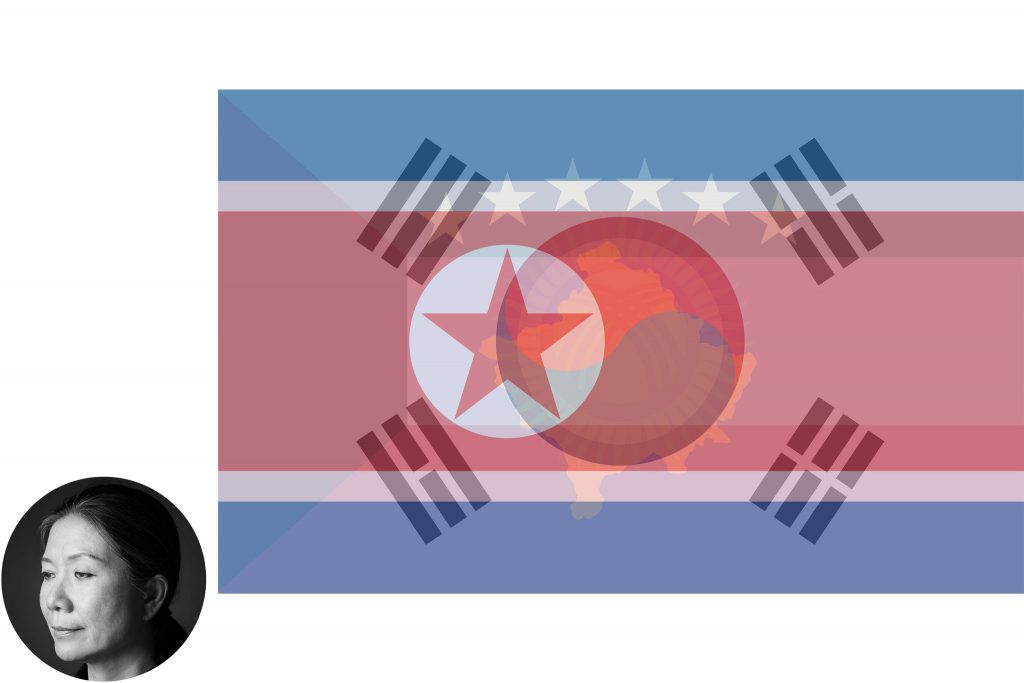
Kimsooja
Born in Taegu, South Korea, in 1957.
This work combines and transposes six national flags that, together, form a new transnational flag. They are layered in alphabetical order by country, including nations that are not internationally recognized, without hierarchy or political prejudice. The piece comes from the video “To Breathe – The Flags” (2012), a commission from the International Olympic Committee on the occasion of the London 2012 Summer Olympics, which depicts 246 flags of the participating nations dissolving in a continuous loop, their iconic designs morphing into one another. I wanted to present the flags as indistinguishable cross-pollinating visual symbols, to empty and reconfigure their purported intent — as symbols of state sovereignty and nationhood — in order to blur and transcend national borders. This work is a call for coexistence, for an ideal world in which individuals can unite in celebration of our distinctions and of our common humanity.
Alfredo Jaar
Born in Santiago, Chile, in 1956.
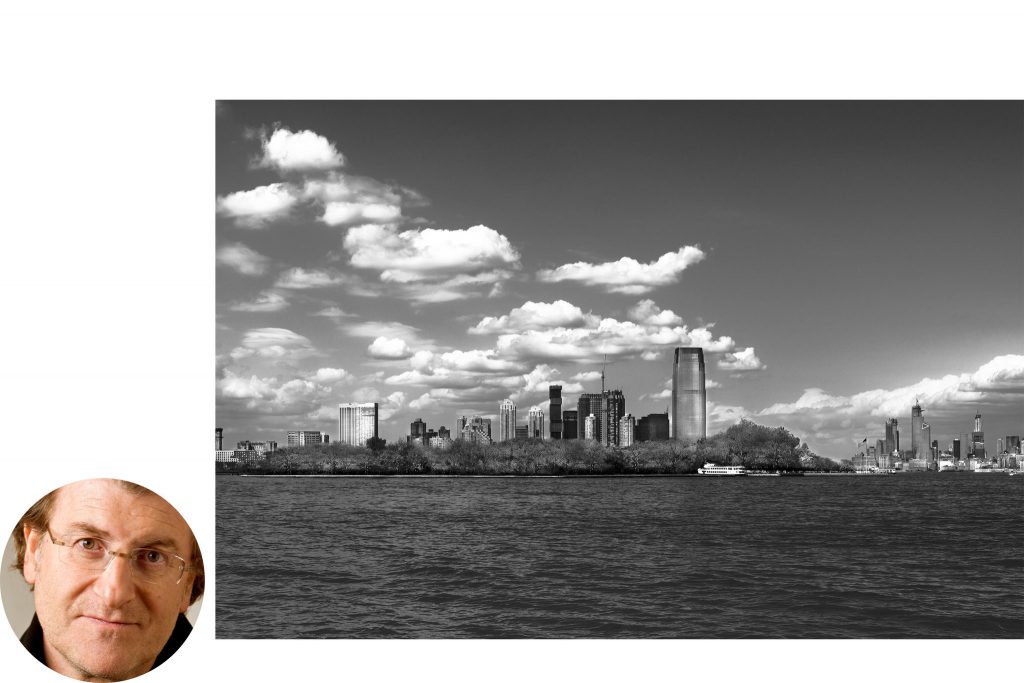
This photograph depicts Ellis Island as it might appear in 2024, completely transformed into a park with no traces of what exists there today. Ellis Island, a former inspection station that saw millions of immigrants to the United States pass through its doors during the 19th and 20th centuries, was once a beautiful symbol of solidarity and openness. With this image, I would like to suggest that the values represented by Ellis Island are vanishing before our eyes.
Hayv Kahraman
Born in Baghdad, Iraq in 1981.
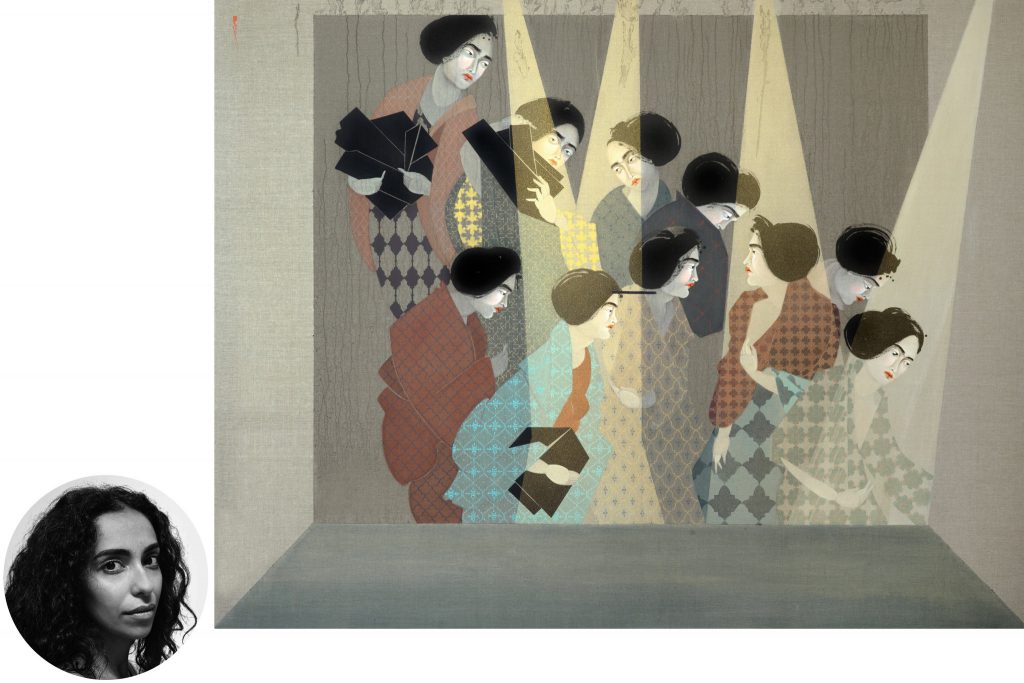
The placid mirage on a strip of the road reminded me of my country. For a moment I felt transported. The image of the desert spoke covertly of my past and future. It was as if temporality was absent. Two distinct spaces that in reality had declared war on one another, and yet here they were in front of me, indistinguishable. I caught myself suddenly and gained composure, reminding myself that I am in a land that was/is currently at war with my homeland.A warm, flickering beam of sunlight brushes my eye and I squint. The apparition of water conjures up childhood memories of driving from Baghdad to Al Habbaniya, and the time that I asked my dad about mirages. A mirage, he said, is a distant illusion of water created when hot air meets cool air. It’s not real. It only exists in your mind. Do we all see mirages? I asked. Yes, we all see them.This shared perception of water makes me realize that, whether we are in the United States or in Iraq, we are all part of a collective species sharing one global platform where margins are consistently being negotiated and contested. Today I physically find myself on the other side of the line, struggling to keep my memories afloat. You have made it clear that I’m an “Other” but I refuse to be erased. This is my position as an immigrant and refugee yet I still share the same vision of water on the road as anyone else.
Edel Rodriguez
Born in Havana, Cuba in 1971.
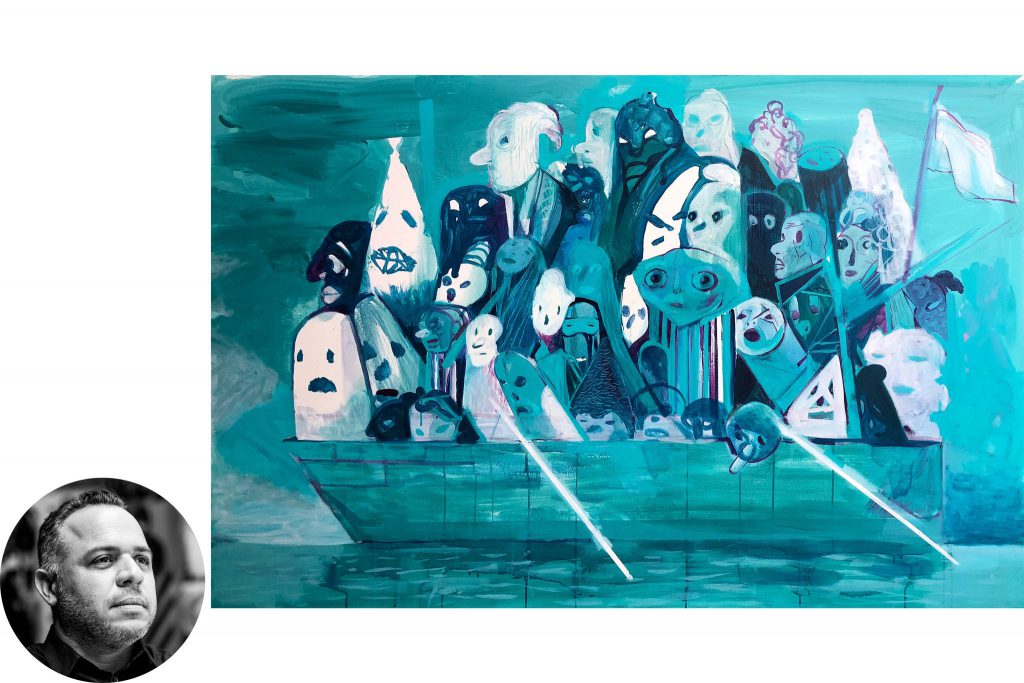
Boat people, that’s what many immigrants are considered. I was one of them, a refugee. I understand that welcoming strangers can be dangerous. Throughout history, many countries have sent their best, as well as their worst, to the United States. Irish gangs and the Italian Mafia, among many other criminal groups, flourished here soon after their arrival. We have always lived with the dangers of accepting foreigners, and we have always dealt with them, knowing that those are the risks a country must assume if it is to be a beacon to the entire world. This country now seems scared to take risks on foreigners, to bet on the possibility that the next boat full of strangers might be full of greatness.
Art Spiegelman
Born in Stockholm, Sweden in 1948.
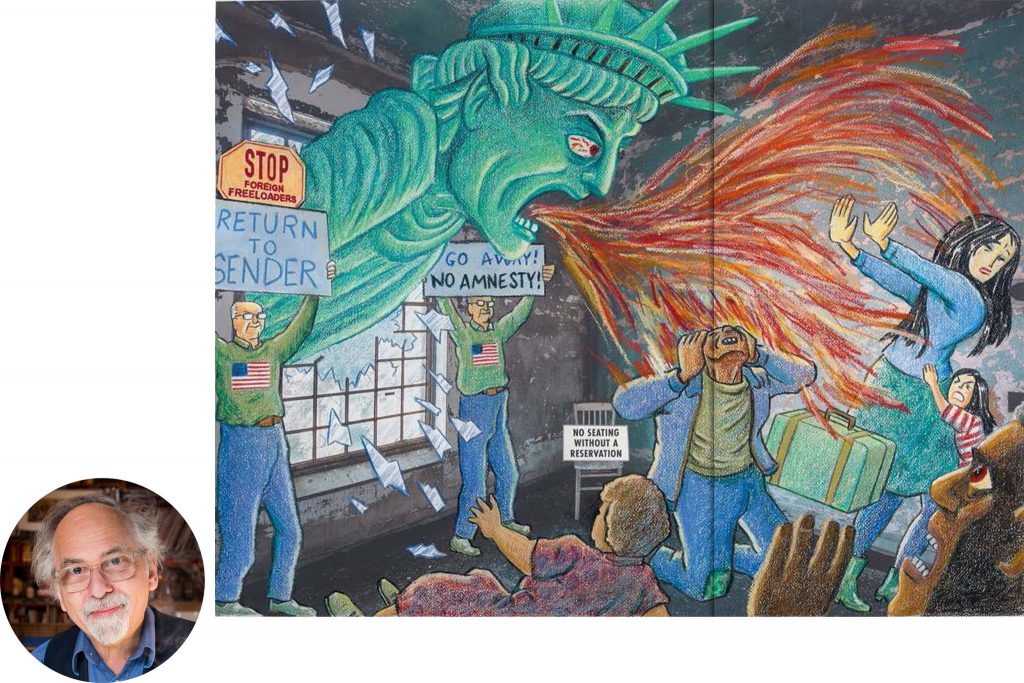
I first saw the Statue of Liberty in October 1950 while perched high on my father’s shoulders. My parents, survivors of Hitler’s death camps, had been granted immigration visas to the United States, and all the passengers were crowded on the foredeck of the Gripsholm as we approached the harbor. I was less than 3 years old when my father excitedly pointed at the giant lady standing in the water to welcome us to New York. I was suitably awed until we got closer and was disappointed to see that she was “just” a statue.
I remember my mother reciting the Emma Lazarus sonnet inscribed on the statue’s base to me in my childhood as if it were liturgy: “Give me your tired, your poor, your huddled masses yearning to breathe free/The wretched refuse of your teeming shore/Send these, the homeless, tempest-tost to me.” In the decades since, I had to learn how often Emma Lazarus’s sentiments have been betrayed by harsh immigration policies. ICE has scorched the dreams of many of the tempest-tost and these days actively betrays that inscription with a cruelty my parents had hoped they had left behind.
